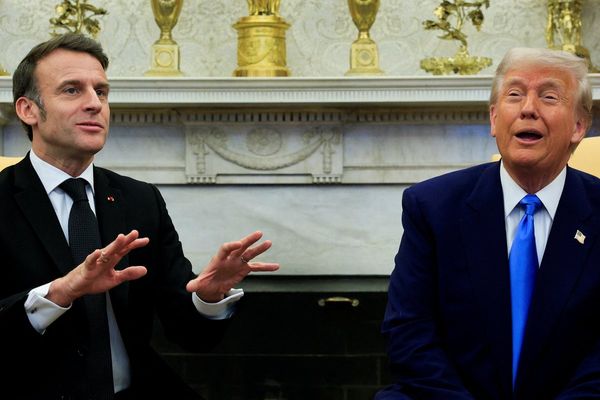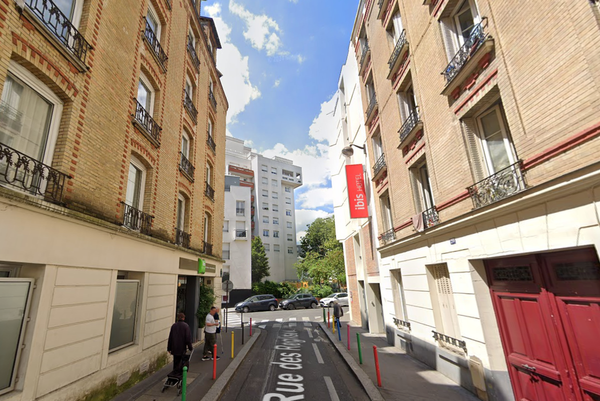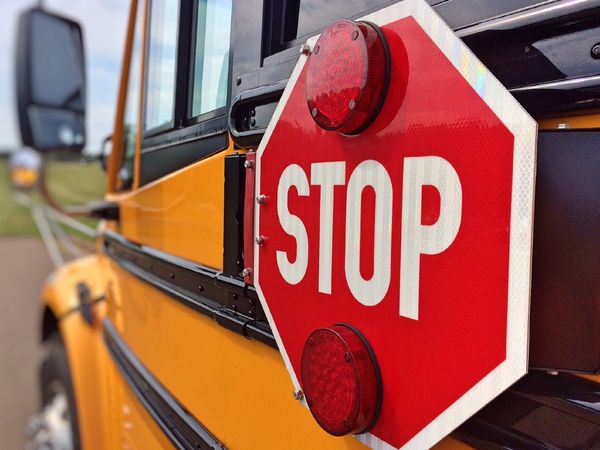Strapped aboard plane wreckage hurtling uncontrollably towards Earth, 17-year-old Juliane Koepcke had a fleeting thought as she glimpsed the ground 3,000 metres below her.
The trees in the dense Peruvian rainforest looked like heads of broccoli, she thought, while falling towards them at 45 metres per second.
A wild thunderstorm had destroyed the plane she was travelling in and the row of seats Juliane was still harnessed to twirled through the air as it fell.
She lost consciousness, assuming that odd glimpse of lush Amazon trees would be her last.
But then, Juliane woke up.
The jungle canopy was now above her.
It was Christmas Day 1971, and Juliane, dressed in a torn sleeveless mini-dress and one sandal, had somehow survived a 3km fall to Earth with relatively minor injuries.
Walking away from such a fall bordered on miraculous, but the teen's fight for life was only just beginning.
She had crash-landed in Peru, in a jungle riddled with venomous snakes, mosquitoes, and spiders.
Returning to civilisation meant this hardy young woman, the daughter of two famous zoologists, would need to find her own way out.
The 'jungle child' raised by scientists
Born to German parents in 1954, Juliane was raised in the Peruvian jungle from which she now had to escape.
Her father, Hans-Wilhelm Koepcke, was a renowned zoologist and her mother, Maria Koepcke, was a scientist who studied tropical birds.
Together, they set up a biological research station called Panguana so they could immerse themselves in the lush rainforest's ecosystem.
Juliane became a self-described "jungle child" as she grew up on the station.
"I learned a lot about life in the rainforest, that it wasn't too dangerous," she told the BBC in 2012.
"It's not the green hell that the world always thinks."
Juliane was homeschooled at Panguana for several years, but eventually she went to the Peruvian capital of Lima to finish her education.
In 1971, Juliane and Maria booked tickets to return to Panguana to join her father for Christmas.
Her mother wanted to get there early, but Juliane was desperate to attend her Year 12 dance and graduation ceremony.
Their only option was to fly out on Christmas Eve on LANSA Flight 508, a turboprop airliner that could carry 99 people.
Juliane's father knew the Lockheed L-188 Electra plane had a terrible reputation.
Of 170 Electras built, 58 were written off after they crashed or suffered extreme malfunctions mid-air.
He urged them to find an alternative route, but with Christmas just around the corner, Juliane and Maria decided to book their tickets.
The flight initially seemed like any other.
Placed in the second row from the back, Juliane took the window seat while her mother sat in the middle seat.
They ate their sandwiches and looked at the rainforest from the window beside them.
But 15 minutes before they were supposed to land, the sky suddenly grew black.
"Daylight turns to night and lightning flashes from all directions. People gasp as the plane shakes violently," Juliane wrote in her memoir The Girl Who Fell From The Sky.
"Bags, wrapped gifts, and clothing fall from overhead lockers. Sandwich trays soar through the air, and half-finished drinks spill onto passengers' heads. People scream and cry."
Maria, a nervous flyer, murmured to no-one in particular: "I hope this goes alright".
Juliane recalled seeing a huge flash of white light over the plane's wing that seemed to plunge the aircraft into a nosedive.
"Now it's all over," Juliane remembered Maria saying in an eerily calm voice.
Then the screams of the other passengers and the thundering roar of the engine seemed to vanish.
"The next thing I knew, I was no longer inside the cabin," Juliane told the New York Times earlier this year.
"I was outside, in the open air. I hadn't left the plane; the plane had left me."
Juliane, likely the only one in her row wearing a seat belt, spiralled down into the heart of the Amazon totally alone.
'There was almost nothing my parents hadn't taught me about the jungle'
On the floor of the jungle, Juliane assessed her injuries.
Woozy and confused, she assumed she had a concussion. Her collar bone was also broken and she had gashes to her shoulder and calf.
"I lay there, almost like an embryo for the rest of the day and a whole night, until the next morning," she wrote.
Without her glasses, Juliane found it difficult to orientate herself. Her first priority was to find her mother.
Maria, a passionate animal lover, had bestowed upon her child a gift that would help save her.
She could identify the croaks of frogs and the bird calls around her.
"I recognised the sounds of wildlife from Panguana and realised I was in the same jungle," Juliane recalled.
She was not far from home. But one wrong turn and she would walk deeper and deeper into the world's biggest rainforest.
"There was almost nothing my parents hadn't taught me about the jungle. I only had to find this knowledge in my concussion-fogged head."
Juliane finally pried herself from her plane seat and stumbled blindly forward.
She found a packet of lollies that must have fallen from the plane and walked along a river, just as her parents had always taught her.
Her father had warned her that piranhas were only dangerous in the shallows, so she floated mid-stream hoping she would eventually encounter other humans.
The jungle was in the midst of its wet season, so it rained relentlessly. Everything was simply too damp for her to light a fire. No trees bore fruit.
"Much of what grows in the jungle is poisonous, so I keep my hands off what I don't recognise," Juliane wrote.
On her fourth day of trudging through the Amazon, the call of king vultures struck fear in Juliane.
The scavengers only circled in great numbers when something had died.
The call of the birds led Juliane to a ghoulish scene.
Three passengers still strapped to their row of seats had hit the ground with such force that they were half buried in the earth.
One of the passengers was a woman, and Juliane inspected her toes to check it wasn't her mother.
"They were polished, and I took a deep breath. My mother never used polish on her nails," she said.
Juliane could hear rescue planes searching for her, but the forest's thick canopy kept her hidden.
She was sunburned, starving and weak, and by the tenth day of her trek, ready to give up.
"Ice-cold drops pelt me, soaking my thin summer dress. The wind makes me shiver to the core. On those bleak nights, as I cower under a tree or in a bush, I feel utterly abandoned," she wrote.
But around a bend in the river, she saw her salvation: A small hut with a palm-leaf roof.
Inside, she found a can of petrol.
The gash in her shoulder was infected with maggots.
She poured the petrol over the wound, just as her father had done for a family pet.
"The pain was intense as the maggots tried to get further into the wound. I pulled out about 30 maggots and was very proud of myself. I decided to spend the night there," she said.
The next day she awoke to the sound of men's voices and rushed from the hut.
The local Peruvian fishermen were terrified by the sight of the skinny, dirty, blonde girl.
"They thought I was a kind of water goddess — a figure from local legend who is a hybrid of a water dolphin and a blonde, white-skinned woman," she said.
But Juliane's parents had given her one final key to her survival: They had taught her Spanish.
"I'm a girl who was in the LANSA crash," she said to them in their native tongue.
"My name is Juliane."
Why did Juliane survive?
Over the years, Juliane has struggled to understand how she came to be the only survivor of LANSA flight 508.
Ninety other people, including Maria Koepcke, died in the crash. It's believed 14 people survived the impact, but were not well enough to trek out of the jungle like Juliane.
The cause of the crash was officially listed as an intentional decision by the airline to send the plane into hazardous weather conditions.
Juliane later learned the aircraft was made entirely of spare parts from other planes.
With her survival, Juliane joined a small club.
Dozens of people have fallen from planes and walked away relatively unscathed.
A 23-year-old Serbian flight attendant, Vesna Vulovi, survived the world's longest known fall from a plane without a parachute just one year after Juliane.
A mid-air explosion in 1972 saw Vesna plummet 9 kilometres into thick snow in Czechoslovakia. She suffered a skull fracture, two broken legs and a broken back.
But still, she lived. And no-one can quite explain why.
Juliane has several theories about how she made it back in one piece.
She wonders if perhaps the powerful updraft of the thunderstorm slowed her descent, if the thick canopy of leaves cushioned her landing.
Now a biologist, she sees the world as her parents did.
In her mind, her plane seat spun like the seed of a maple leaf, which twirls like a tiny helicopter through the air with remarkable grace.
The forces of nature are usually too great for any living thing to overcome. But sometimes, very rarely, fate favours a tiny creature.
An upward draft, a benevolent canopy of leaves, and pure luck can conspire to deliver a girl safely back to Earth like a maple seed.
That girl grew up to be a scientist renowned for her study of bats.
She still runs Panguana, her family's legacy that stands proudly in the forest that transformed her.
"The jungle is as much a part of me as my love for my husband, the music of the people who live along the Amazon and its tributaries, and the scars that remain from the plane crash," she said.







